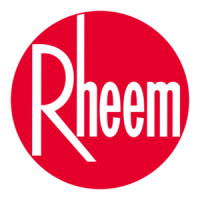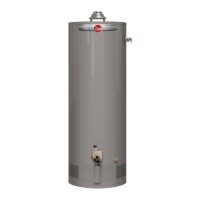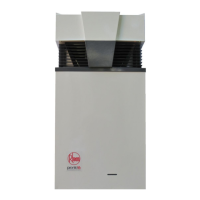14
Installation Checklist
A. Water Heater Location
B. Water Supply
C. Gas Supply
D. Relief Valve
E. Venting
❑ Close to area of vent.
❑ Indoors and protected from freezing
temperatures.
❑ Proper clearance from combustible surfaces
observed and water heater not installed on
carpeted floor.
❑ Sufficient fresh air supply for proper operation
of water heater.
❑ Air supply free of corrosive elements and
flammable vapors.
❑ Provisions made to protect area from water
damage.
❑ Sufficient room to service heater.
❑ Combustible materials, such as clothing,
cleaning materials, rags, etc. clear of the base
of the heater.
❑ Clearances from combustion air inlet openings
observed (see page 7).
❑ Water heater completely filled with water.
❑ Air purged from water heater and piping.
❑ Water connections tight and free of leaks.
❑ Gas line equipped with shut-off valve, union and
sediment trap.
❑ Approved pipe joint compound used.
❑ Soap and water solution used to check all
connections and fittings for possible gas leak.
❑ Gas Company inspected installation (if required).
❑ Temperature and Pressure Relief Valve properly
installed and discharge line run to open drain.
❑ Discharge line protected from freezing.
❑ Flue baffle properly hung in top of heater’s flue.
❑ Draft hood properly installed.
❑ Vent connector(s) pitched upward to chimney
(¼" per foot of length minimum) .
❑ Vent connector(s) securely fastened together with
screws.
❑ Single wall vent connector(s) at least 6” from
combustible material.

